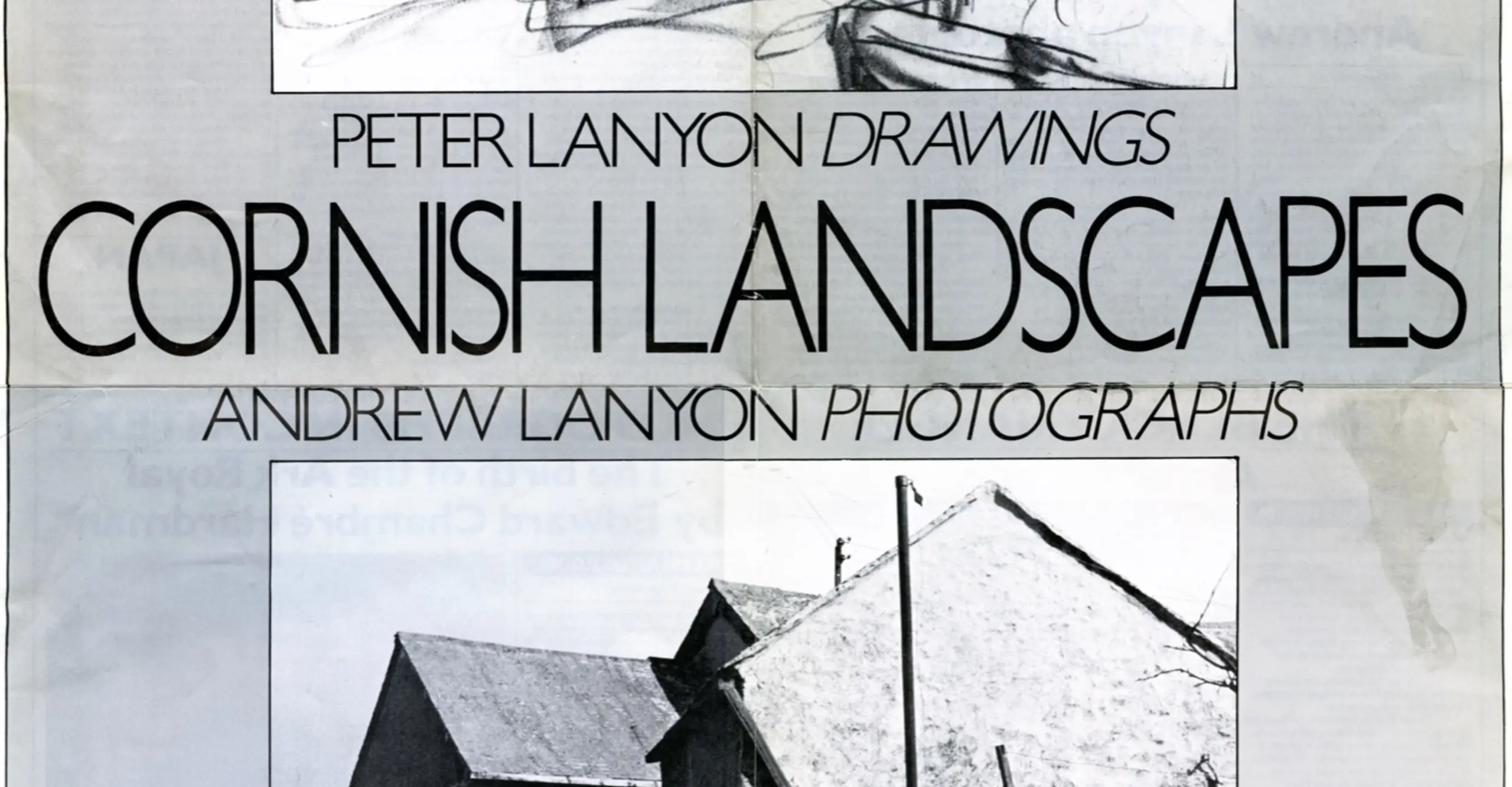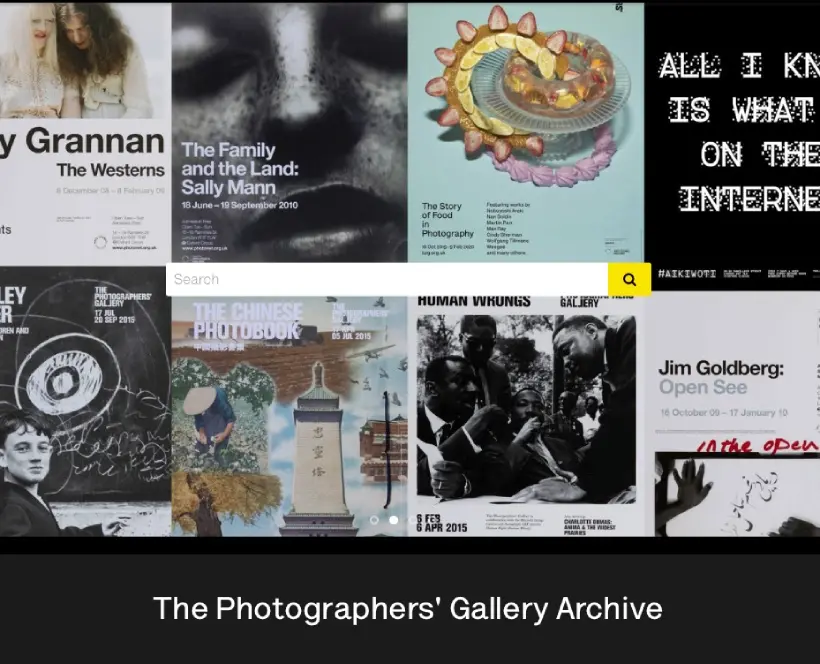Born in 1918 Peter Lanyon studied under Borlase Smart, but came under the influence of Ben Nicholson when he moved with Barbara Hepworth and Naum Gabo to St. Ives in 1939. During the war he served as an Aero Engineer with the RAF. On his return he evolved a style of painting which verged on the abstract but which never lost its basis in observation and experience. His drawings were a vital part in the transformation of his vision and reveal the innermost workings of the artist's mind. In 1952 he wrote to Paul Feiler 'I do not start with the idea but with the experience.' The drawings are the results of this direct experience and the raw material from which many of his paintings were made.
The early drawings with their geometric precision show clearly the influence of Ben Nicolson's teaching. In the drawings made for the paintings St. Just, 1951, and Porthleven, 1951, a freer line is apparent, a bolder grasp of forms and their inter-relationship. His method at this time was to build up a coherent portrait of a place by making a variety of drawings so that the painting ended up by being a synthesis of several different viewpoints. Of his painting St. Just he wrote
'Saint Just is the last town in England before you reach Land's End. It's an old mining town, with disused mine shafts all round it, like the telegraph poles in the photographs which interfere with the view from the hills around the town. I don't want to paint a view from a single place like this, but a picture about Saint Just - the place complete with all its associations. If you walked about the place you might see the bits and pieces that I combine into a picture.'
In 1956 Peter Lanyon saw the exhibition Modern Art in the United States at the Tate Gallery, and in 1957 he visited New York for his first exhibition there. These contacts with Abstract Expressionism along with his experience of gliding, which he began in 1959, liberated and simplified his technique, and the later drawings show a dramatic intensification of line, and a freer more calligraphic style.
His death in a gliding accident in 1964 came at a time when his son Andrew Lanyon was beginning his career as an artist. Born in 1947 he travelled to Paris with a Leica in 1964. There he met Man Ray, and the photographs he took of a suicide falling from the Eiffel Tower led to some freelance work when he returned. In 1966 he attended the London School of Film Technique and continued 'to cruise the lanes and streets Cartier Bresson fashion, perfecting invisibility, stalking his prey with the stealth of a panther and the innocence of a ventriloquist'. His photographic work lasted for seven years and the exhibition includes his dark and brooding evocations of the Cornish landscape.
The photographs range in subject matter from the many Standing Stones in Cornwall, to the spraying of oil from the Torrey Canyon in 1967. Much of the work depicts incidental details of houses and of landscape such as the walls at Porthmeor near Zennor with the triangle of shadow; coal being loaded into a lorry; the broken window of a house in St. Just. His vision is an idiosyncratic one, delighting in the incongruous and absurd; the cricketers playing in a fog, or the large white Bentley in a narrow country lane.
In 1971 Andrew Lanyon turned to painting but his interests in photography and magic were combined in the exhibition The Rooks of Trelawne first shown at The Photographers' Gallery and now on permanent exhibition at The St. Ives Museum. In 1980 further exploration of the medium resulted in a witty look at the early days of photography through the imagination of Charles Dodgson's Alice in Wonderland, and resulted in The Vanishing Cabinet where models, paintings and photographs were all included in the exhibition.
To combine photographs and drawings is a new departure for the Gallery, although paintings were included in Andrew Lanyon's previous exhibitions. By showing photographs and drawings of the same landscape, it is possible to discern more clearly the qualities and limitations of each medium.
Andrew Lanyon's photograph of Gunwalloe Cove in 1967 shows the church nestling in the cliffs with the sea crashing against the opposite shore. Peter Lanyon's drawing of the same scene in 1959 is virtually an aerial one with the church caught up in a vortex of sea, cliff, beach and hill. The violent marks denoting the cliff, the clear outline of the church, the smooth whale-like shape of the hill are overlaid by delicate atmospheric scrawls. Whereas the photograph records a moment in time and contrasts the solidity of the church with the fluidity of the sea, the drawing embodies the energy of the weather and places the various components of the scene in a dynamic relationship.
Peter Lanyon has said:
Many of my paintings are paintings of weather. I like to paint places where solids and fluids come together, such as the meeting of sea and cliff, of wind and rock, of human body and water'. The inter-relationship of land, sea and sky is apparent in both the photographs and the drawings which provide complementary insights into the dark recesses of the Cornish landscape and imagination.
The Photographers' Gallery would like to thank all those who have loaned pictures, and especially Mrs Sheila Lanyon and Andrew Lanyon for their help in the preparation of this touring exhibition for the The British Council.
A book, CORNWALL: Drawings and Photographs by Peter Lanyon and Andrew Lanyon was published by Alison Hodge. (ISBN 978-0906720066)
Written by Rupert Martin, exhibitions organiser
Information for this exhibition is currently incomplete or yet to be catalogued.
We’re working to document our past programme using material in our Archive, and so information on this exhibition may become available in the future.
Can you help us? If you visited or were involved with this exhibition and have information you can share with us, we’d love to hear from you. You can get in touch using the details below.
Likewise if you spot anything incorrect, have any further information that would improve this listing, or want to share a memory of TPG please contact us at tpg.archive@tpg.org.uk
For further details on our past programme, visit our Archive and Study Room.

